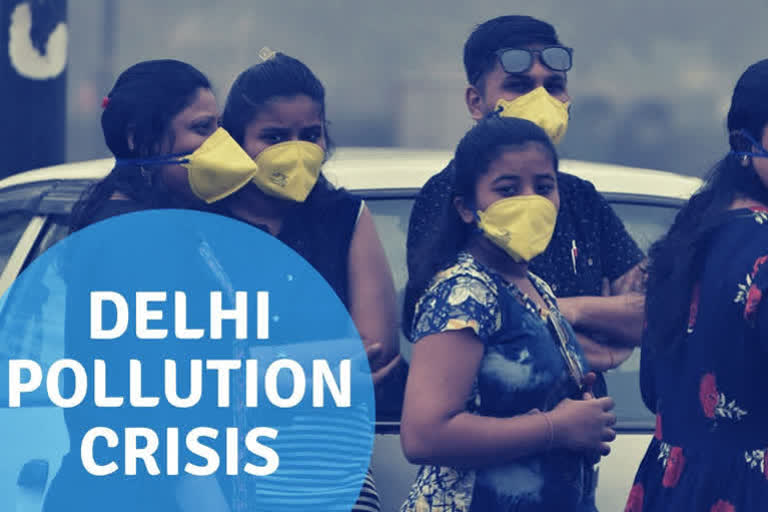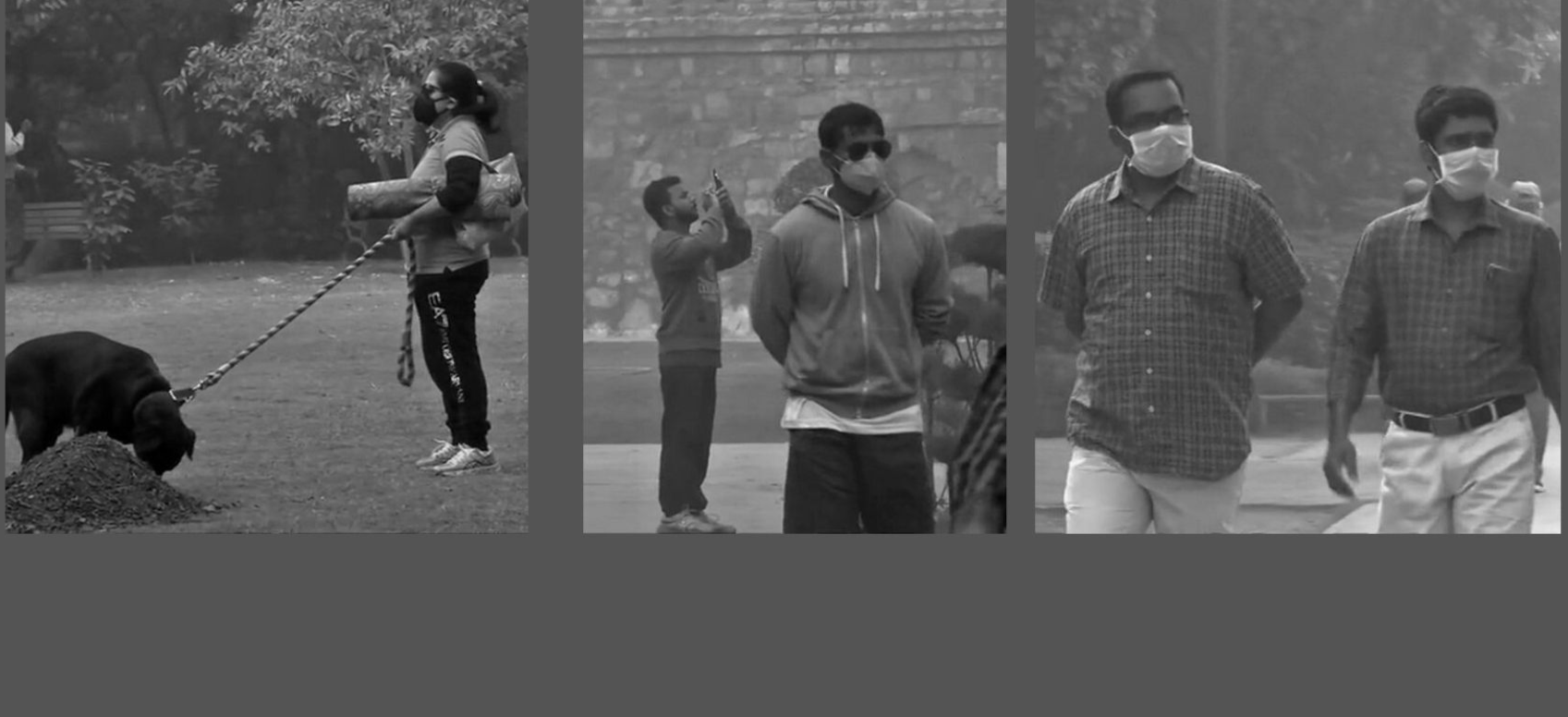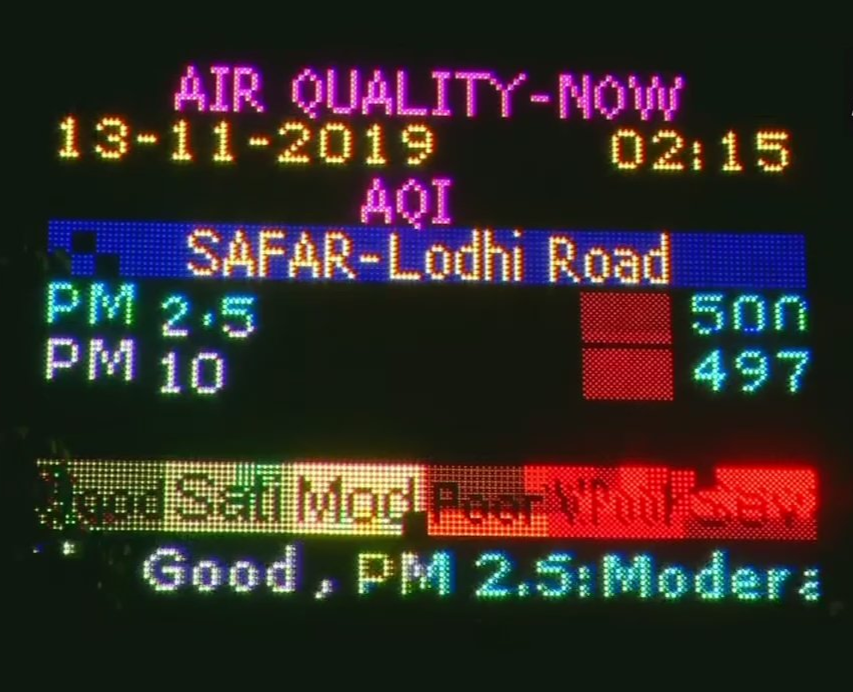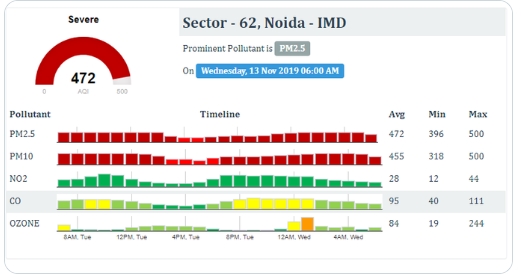New Delhi: The noxious haze returned to Delhi and its suburbs on Tuesday with raging stubble fires in neighbouring states, fall in the temperature and wind speed pushing the city's air quality in the "severe" zone.
The government's air quality monitor, System of Air Quality and Weather Forecasting and Research (SAFAR), said pollution levels in Delhi-NCR are expected to enter the "severe plus" or "emergency" category on Wednesday.
Madhavan Rajeevan, Secretary, Ministry of Earth Sciences, tweeted, "Forecast (green) suggests air quality in severe+ category by Nov 14 (sic)."
Meteorologists said the national capital recorded on Tuesday morning a minimum temperature of 11.7 degrees Celsius, the season's lowest so far. It is two notches below normal for this time of the year.
A dip in wind speed and temperature makes the air cold and denser, leading to accumulation of pollutants, said Kuldeep Srivastava, head of the India Meteorological Department's regional weather forecasting centre.
The levels of PM 2.5 -- tiny particulate matter less than 2.5 microns in diameter that can enter deep into the lungs and even the bloodstream -- shot up to 337 micrograms per cubic metre, breaching its emergency threshold of 300, by 9pm in Delhi-NCR. In case of PM2.5, the safe level is 0-60 micrograms per cubic metre.
The levels of PM10 increased to 484 micrograms per cubic metre, nearly five times the safe limit of 100 micrograms per cubic metre. Most of the 37 air quality monitoring stations across Delhi recorded air quality in the severe category.
An AQI between 201 and 300 is considered 'poor', 301-400 'very poor' and 401-500 'severe'. An AQI above 500 falls in the 'severe plus' category.
Experts said the spike in pollution levels can be attributed to a significant decline in wind speed. Incidents of stubble burning in Haryana and Punjab have increased and northwesterly winds have been bringing more farm fire plumes to the Delhi-NCR region, they said.
According to SAFAR, the share of stubble-burning accounted for 25 per cent of Delhi's pollution on Tuesday, up from 18 per cent on Monday.
"No sudden recovery is expected at least for the next two days and the AQI is likely to deteriorate further towards severe-plus category by tomorrow. The condition may slightly improve by November 15," it said in a report.
For around a week after Diwali, a pungent smog lingered over Delhi-NCR as a result of emissions from firecrackers, stubble burning and unfavourable weather.
As the air pollution neared the emergency level on November 1, a Supreme Court-mandated panel declared a public health emergency and the administration ordered closure of schools till November 5.
Last week, the apex court had pulled up the Centre and state governments for their inability to curb stubble-burning in Punjab and Haryana and bring air pollution in Delhi under control.
The period between October 15 and November 15 is considered critical as a maximum number of stubble-burning incidents take place in this span in Punjab and adjoining states, which is one of the main reasons for the alarming spike in pollution in Delhi-NCR.
Read: Delhi-NCR pollution: SC slams Punjab govt on stubble burning








